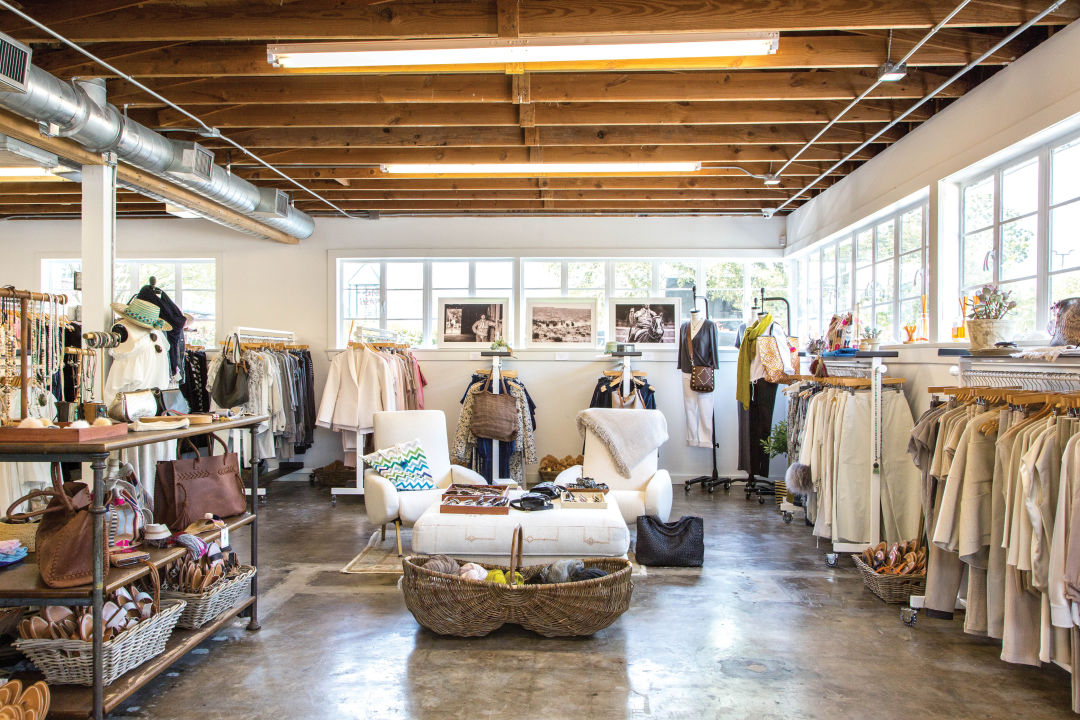A Newbie's Overview to Navigating the Boutique Fashion Scene
A Newbie's Overview to Navigating the Boutique Fashion Scene
Blog Article
Sustainable Fashion: Just How Eco-Friendly Clothing Is Shaping the Future of Design
As the garment industry faces raising examination over its ecological impact, the increase of lasting style provides a promising option that straightens design with ecological obligation. Employing ingenious products such as recycled fibers and plant-based fabrics, along with advanced approaches like digital and 3D printing, designers are redefining what it suggests to be fashionable in the contemporary age. Simultaneously, the growing popularity of upcycling and second hand society is fostering a change in the direction of a circular economy. How does this movement genuinely affect the future trajectory of fashion, and what obstacles exist in advance in its widespread adoption?
Ingenious Sustainable Products
As the style market grapples with its environmental impact, cutting-edge lasting materials have arised as an essential remedy for lowering environmental footprints. These materials not only lower reliance on fossil fuels however additionally reduce unsafe chemical use and water intake.
Along with plant-based materials, developments in biofabrication have actually resulted in the advancement of lab-grown textiles. Mycelium leather, originated from mushroom origins, offers a naturally degradable and versatile alternative to animal natural leather. Its production leads to substantially reduced carbon discharges and water use, making it an extra lasting option for fashion developers looking for to line up with green methods.
Recycled materials are likewise acquiring grip, with polyester made from recycled plastic bottles standing for a significant development. This advancement not just diverts plastic waste from garbage dumps and oceans however also minimizes power intake compared to creating virgin polyester. Together, these materials emphasize the possibility for a more sustainable fashion business, paving the way for environmentally aware style and production.
Eco-Conscious Manufacturing
Structure on the developments in sustainable products, the fashion market is also re-evaluating its production procedures to even more minimize ecological effect. Trick strategies include decreasing water usage, reducing carbon exhausts, and getting rid of unsafe chemicals.
One more important facet is the reduction of toxic chemicals typically utilized in dyeing and ending up textiles. Eco-conscious manufacturers are shifting towards plant-based dyes and waterless dyeing technologies, which not just secure local environments but also boost worker safety and security. Developments like electronic printing lower material waste and power consumption, offering a cleaner choice to standard methods.
In addition, openness and traceability have ended up being extremely important. With the advancement of blockchain modern technology, companies can currently supply in-depth insights right into their supply chains, making sure ethical and ecologically friendly methods at each action. This transparency constructs customer count on and motivates brand names to maintain high sustainability requirements. As the need for eco-conscious items grows, manufacturers are urged to introduce, making sure that the future of fashion is both elegant and sustainable.
The Increase of Upcycling
Upcycling, a transformative method in sustainable fashion, includes creatively repurposing discarded materials into brand-new, premium products. This ingenious approach not just decreases waste but likewise decreases the demand for resources, thus minimizing the environmental impact of clothing production. By reimagining and reconstructing existing products, developers and style brands have the ability to instill creativity right into their collections while advertising ecological responsibility.

Additionally, the upcycling activity has empowered independent developers and little services, who often lead in development because of their agility and creativity. By maximizing the bountiful schedule of unused materials, these entities contribute to a circular economy, showing that fashion can be both lasting and trendy. Via upcycling, the market takes considerable strides towards a much more conscious and responsible future.
Thrift Society's Influence
The burgeoning thrift society significantly reshapes the landscape of resource lasting fashion, stressing the importance of conscious usage. This social shift urges customers to welcome previously owned clothing, thus lowering the need for new garment production and lessening environmental impact. Second hand shopping not only prolongs the lifecycle of clothes but additionally lowers the carbon impact connected with manufacturing, moving, and getting rid of apparel.
A key element of second hand society is its democratization of style. By offering a large selection of designs from different periods at budget-friendly prices, second hand stores make style obtainable to a more comprehensive target market. This ease of access promotes a feeling of individuality and imagination, as consumers mix and match unique pieces to curate tailored closets without adding to the fast fashion cycle.
Additionally, second hand society advertises circularity in fashion, aligning with the principles of a round economic situation. By recirculating garments, the cycle of waste is interrupted, and resources are conserved. This method supports a shift from a linear "take-make-dispose" design to a much more lasting framework. As more designers and customers embrace thrift society, the apparel industry is compelled to adjust, integrating lasting methods to meet the growing demand for eco-conscious choices.

Future Trends in Style
Fashion's advancement is progressively formed by sustainability-driven initiatives and technical innovations. As consumers end up being much more eco mindful, the market is reacting with groundbreaking developments that redefine the future of style. One prominent pattern is the rise of electronic style, where digital garments can be worn in augmented fact settings, substantially decreasing textile waste. This shift not only provides to the digital-savvy customer yet additionally reduces the ecological impact traditionally linked with garment production.
Additionally, the assimilation of blockchain technology supplies new opportunities in openness and traceability, enabling customers to validate the sustainability qualifications of their apparel. boutique fashion. This makes sure accountability in supply chains and advertises moral sourcing techniques. 3D printing is yet another advancement that promises to transform producing processes by enabling on-demand manufacturing, therefore decreasing excess supply and waste
Additionally, the advancement of bio-fabricated products, such as lab-grown you could look here leather and plant-based fabrics, provides lasting choices to typical products. These advancements lower dependence on animal items and resource-intensive crops. As these innovations grow, they are poised to change the fashion landscape, merging design with sustainability. The future of style, consequently, exists in a smooth blend of technology, technology, and ecological responsibility.
Verdict
The Related Site makeover of the fashion business via sustainable practices shows a critical change towards ecological responsibility. The integration of cutting-edge materials, eco-conscious manufacturing methods, and the embracement of upcycling and second hand culture underscores a commitment to reducing environmental footprints. As these techniques get energy, they redefine the industry's story by prioritizing honest and sustainable selections. This development not just lines up style with environmental sustainability but likewise establishes a precedent for future patterns concentrated on duty and development.
As the style market encounters increasing examination over its ecological influence, the rise of lasting style supplies an encouraging alternative that lines up style with environmental duty.As the fashion sector grapples with its ecological influence, cutting-edge lasting products have actually arised as a vital solution for reducing ecological footprints. Together, these products highlight the potential for a much more sustainable fashion sector, paving the way for eco mindful style and manufacturing.
Structure on the innovations in sustainable products, the fashion sector is likewise re-evaluating its manufacturing processes to additionally reduce environmental impact. boutique fashion.Upcycling, a transformative practice in sustainable style, entails creatively repurposing discarded materials right into brand-new, high-quality items
Report this page